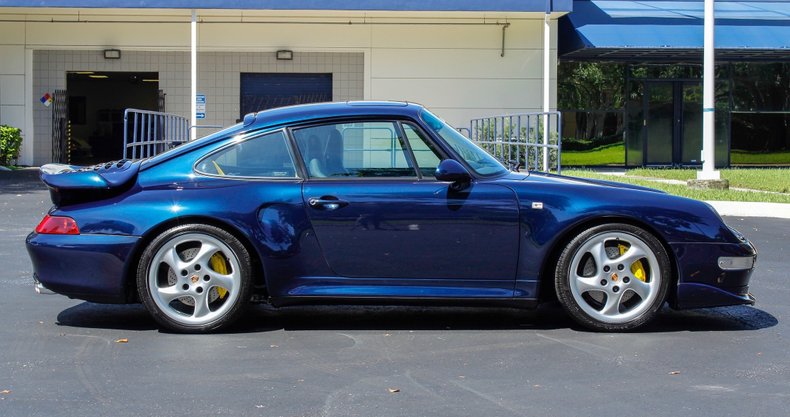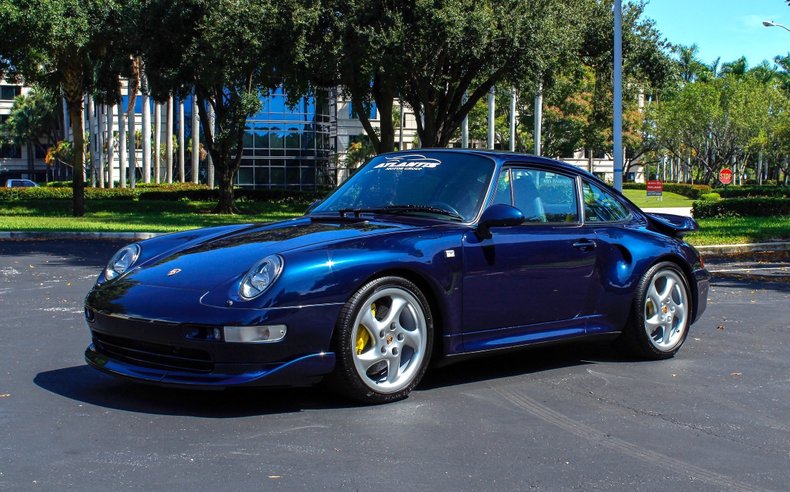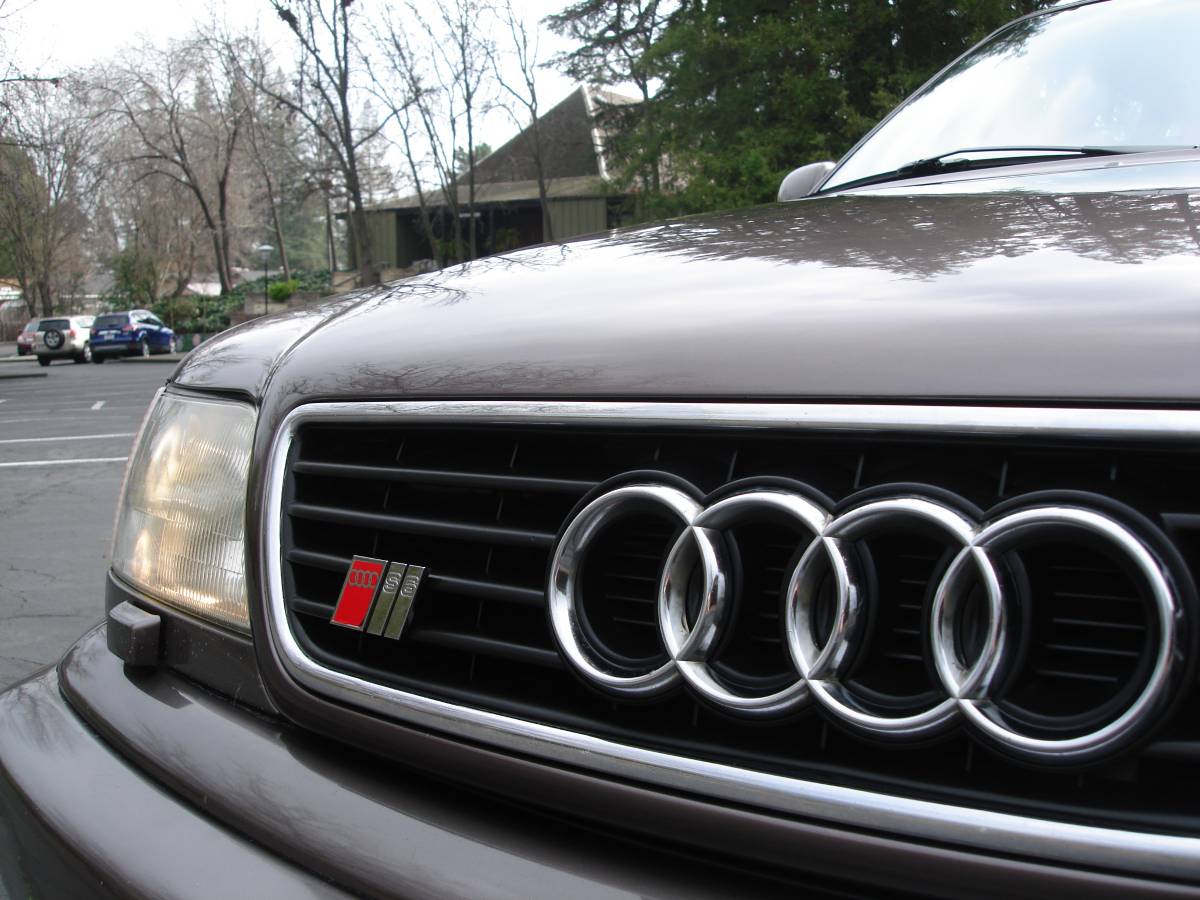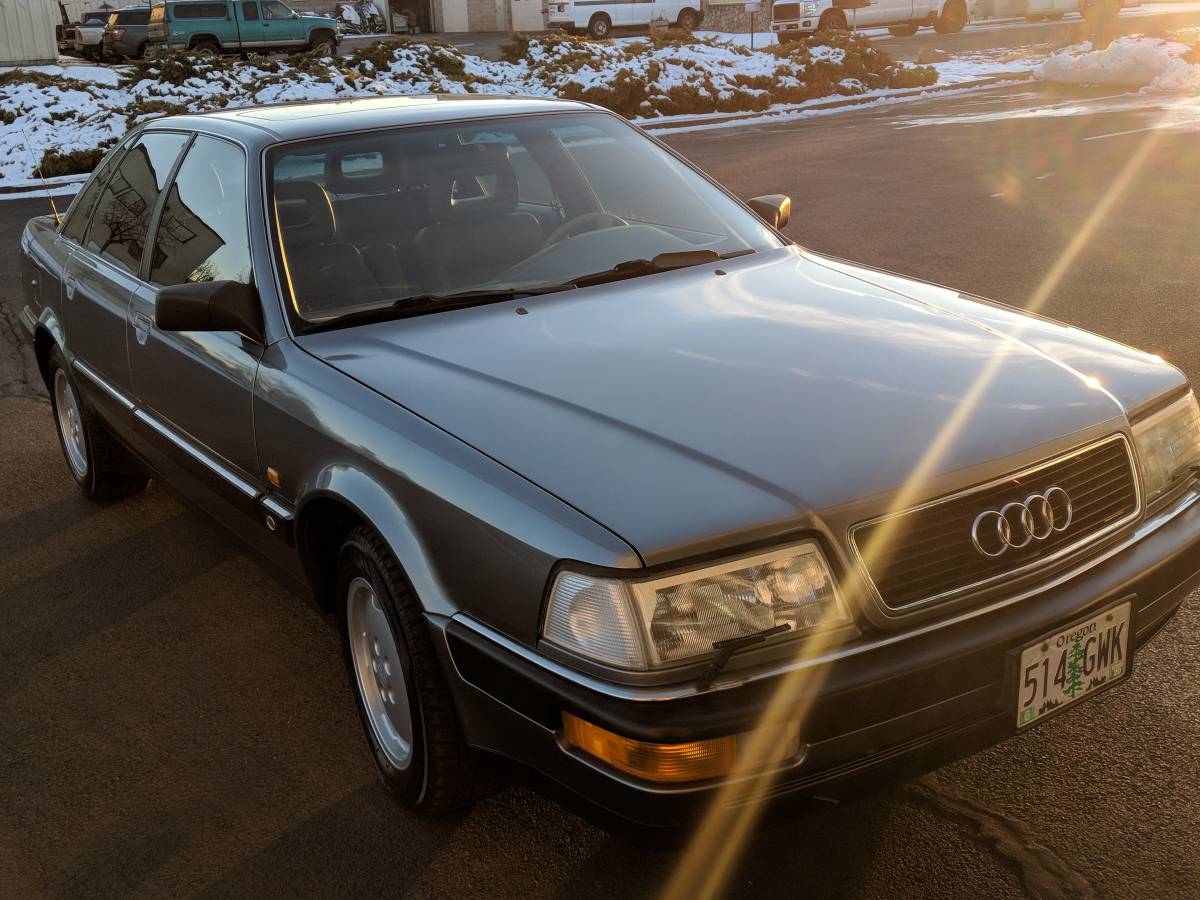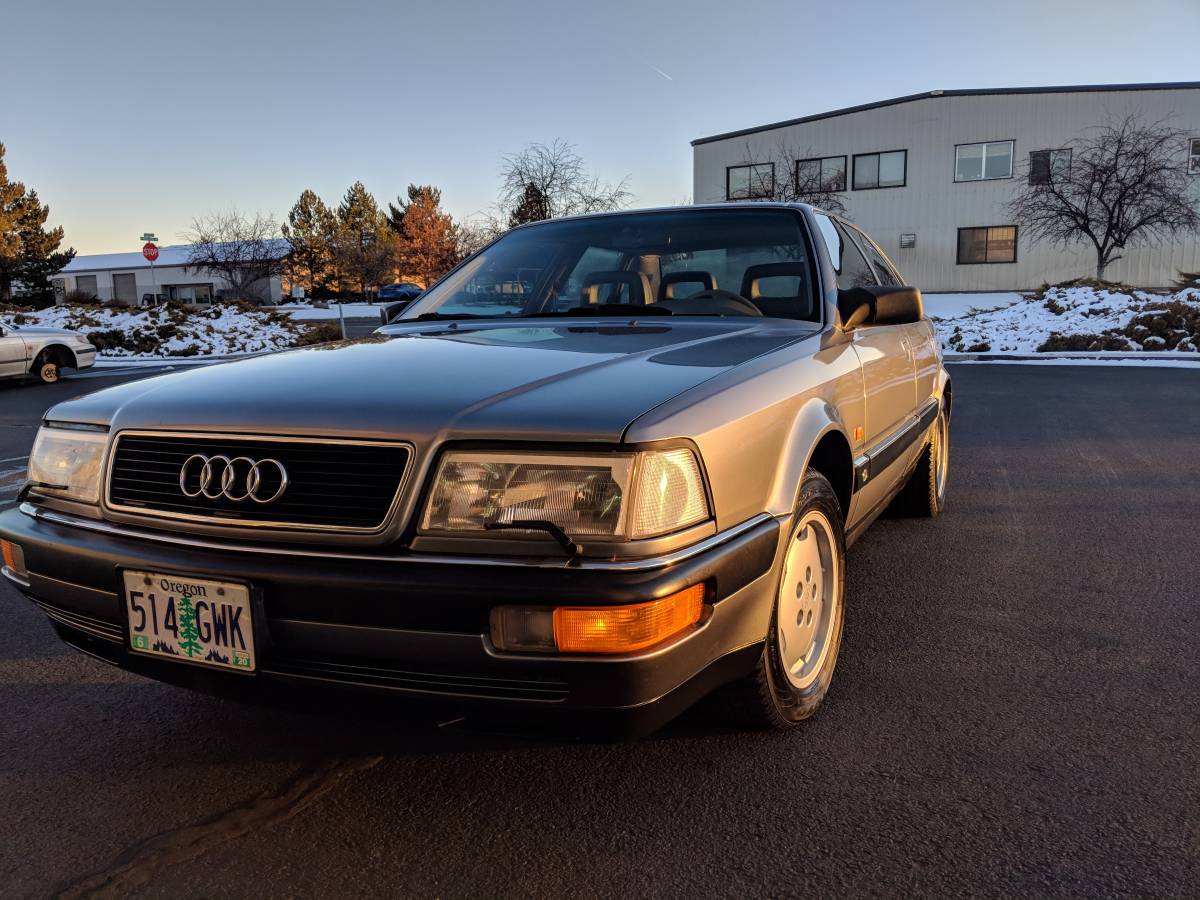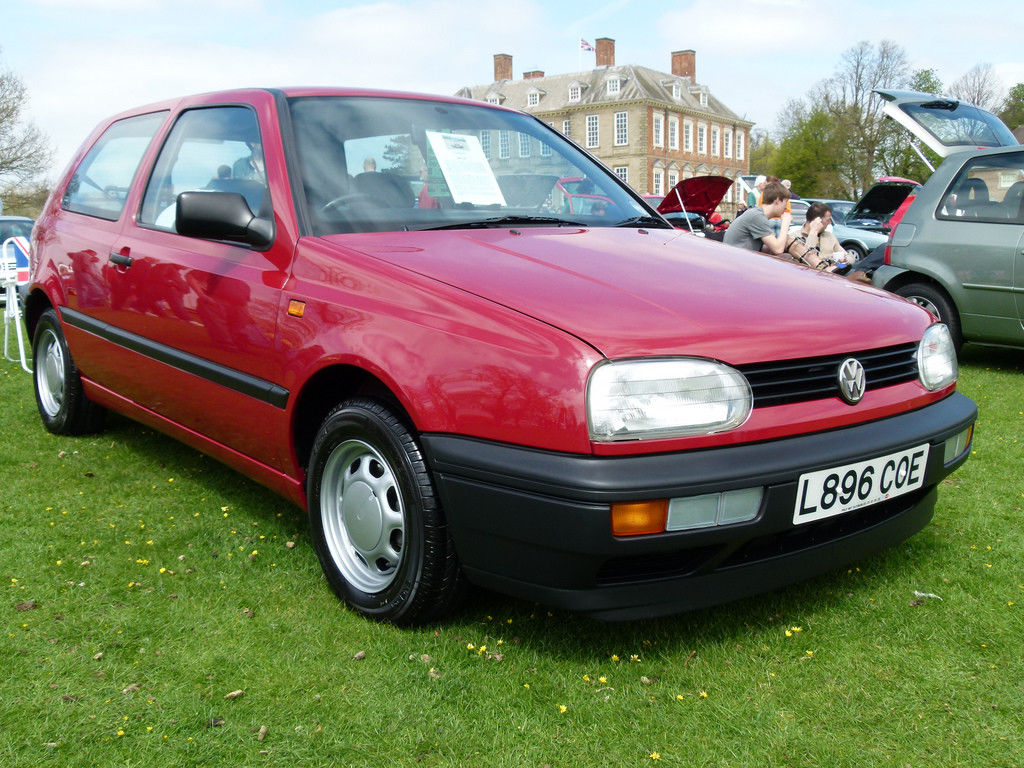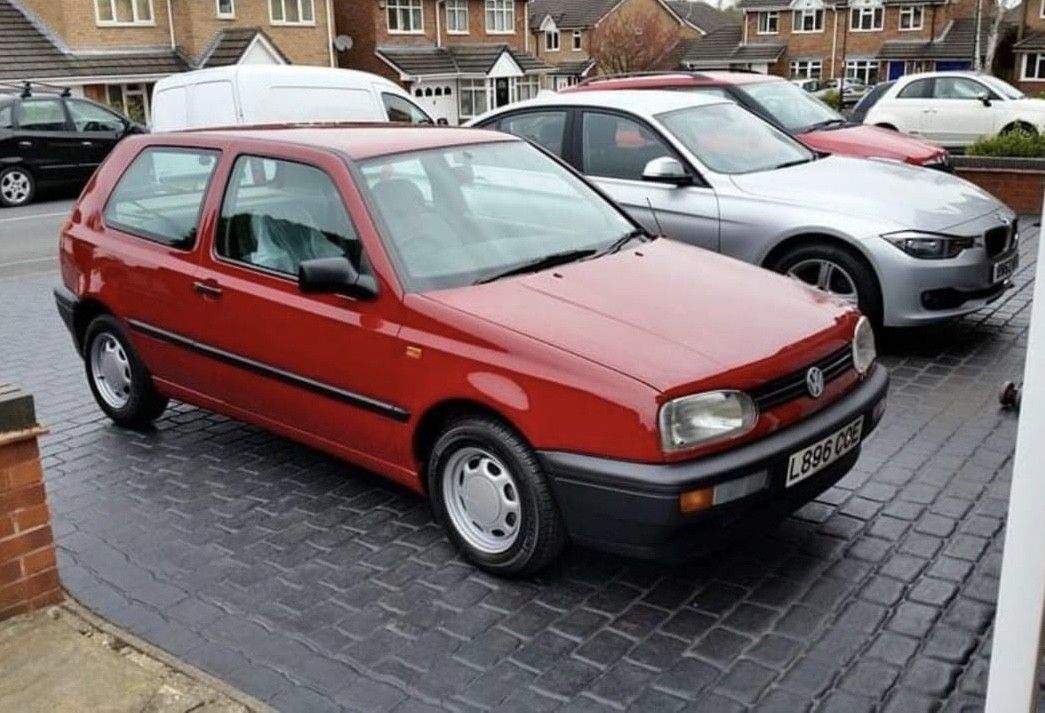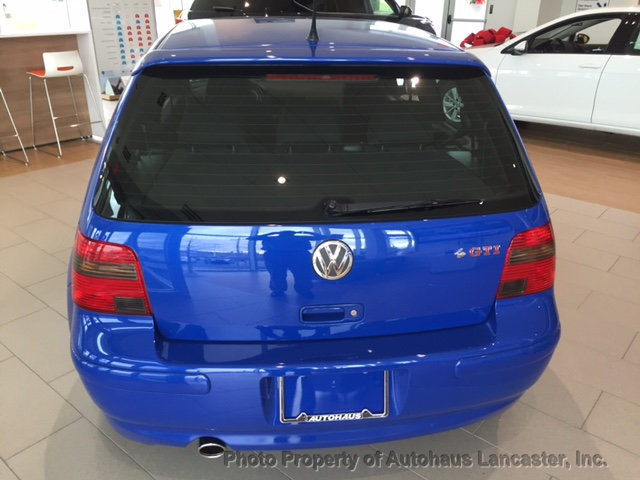As they had with the 964 Turbo, Porsche continued the ultra-exclusive Turbo S package on the actually new 993 Turbo. With 430 horsepower pumped through two turbos to all four wheels, these were not as outrageous as the GT2, but plenty fast and luxurious to make up for it. Big yellow Brembos, a revised aerokit and flank vents that were a nod to the prior generation all helped to distinguish these cars. And with only 345 produced originally, from the get-go these were big dollar collectables. Of course, Porsche made a splash recently when it made a special brand-new one-off 993 Turbo S, ultimately selling it for a touch over $3,100,000.
So I’ll introduce this post by saying that this car is not one of the original Turbo S models. However, if anything, it’s a bit more interesting and even more exclusive. This car started life as a normal 993 Turbo, but was sent through the Porsche Special Wishes/Exclusive department (production coincided with rebranding of the Special Wishes Department to Porsche Exclusive) and given the bulk of the Turbo S details with a few GT2 bits thrown in for good measure. Further, it was then draped in a Paint To Sample color, Ocean Blue Metallic. The main difference between this car and a S is the rear spoiler and badges, which remained standard 993 Turbo items. In many ways, this car is the spiritual successor to the 911 Turbo S 3.6 ‘Package’ I just looked at, and it’s equally exclusive at a claimed one of two produced:
